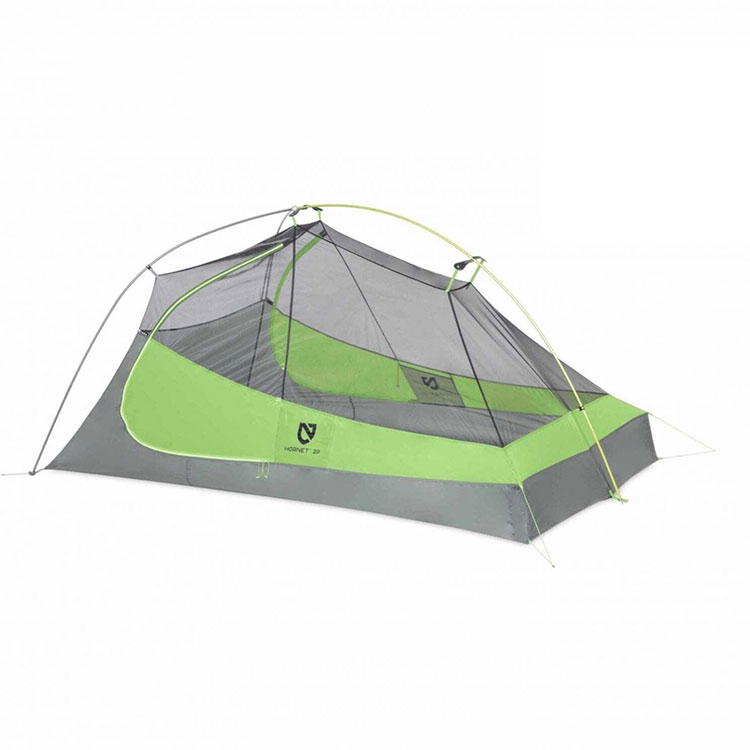Hiking Tents
Author: Bundy Outdoors Date Posted:19 January 2023
The selection of a Hiking Tent to complete your Hiking Gear is one of the most important buying decisions you will make. Your budget and your pack weight and size will have a huge effect on your selection, and as such getting the combination between comfort, price and features is a real balancing act. And, to make matters worse, hiking tents come in all shapes, sizes and features too numerous to list.
A Hiking Tent is a niche item. A Hiking Tent needs to be compact enough to fit inside a backpack, light enough to be carried for hours or days on end and easily assembled, and disassembled. In addition to these features, a Hiking Tent must be robust, as repairs along the trail are not always possible.
For that reason, Hiking Tents can often be classed as a specialty item, with certain brands being considered the best or better than other brands. Brands such as Nemo or Marmot thrive in the world of outdoor backpacking or hiking, and their products are a clear-cut reflection of this and are often classed as a Premium Products. At the upper end of the price range with Nemo and Marmot, you really do get what you pay for. With both companies offering a lifetime warranty (against manufacturing defects) they have a strong belief in the structure, design, and manufacture of their hiking tents.
However, if hiking is not going to be your every-weekend adventure and you are heading out on a hike for the first time to just “see” how you go, you probably don’t want to spend a fortune on a tent that you might never use again. If this is you, other brands such as Oztrail and Blackwolf can offer a more affordable option. But on the flip side, if you are heading to Tasmania to hike the Overland Track or one of New Zealand’s Great Walks, even if it’s only once, you need to have a good tent.
So how do you decide which hiking tent is right for you?
Below is a list of things you might need to consider when selecting your hiking tent.
Capacity
How many people are you going to sleep in the tent? With any hiking tent space/capacity is relative. Nearly all hiking tents will be cozy in size and not generous. So, if you are the only person that will be sleeping in the tent, but like to spread out you might need to look at a 2-person hiking tent, if you don’t mind being snug as a bug in a rug then a 1-person tent would suit you fine. Just remember, the larger the tent, the heavier it will be.
Weight
Selecting a hiking tent is a game of Grams, not Kilos and believe it or not overall every gram counts.
The weight of a hiking tent is a major factor in overall weight and could quite possibly be the largest and heaviest item you are carrying. When considering a hiking tent you really need to have a good idea of what all your other gear is in size and weight.
To get a lighter-weight tent you may need to sacrifice space, features, and durability. While heavy-duty fabrics can make a tent more durable, these fabrics make hiking tents unnecessarily heavy, as some of the ultralight-weight tents are surprisingly robust. If you want a “premium” ultralight tent you will pay more for the ultra-lightweight-yet-strong and durable material.
Seasonality
Another major factor in selecting a hiking tent is seasonality. That is, the season or seasons you will use your tent. A tent built with features primarily for summer hiking will not be suitable for winter or cooler weather hiking, and vice versa.
Most newbies will choose a tent that spans several seasons such as a 3-season tent. This is a tent that has more features and adaptability to cope with several seasons, as not all hiking trips will be the same. However, the addition of extra features, and accessories all add to the weight and size of the tent. More experienced or frequent hikers will actually own more than one tent, so that they can maintain a standard pack weight or size regardless of season.
Tents usually will have a season range, 2-Season, 3-Season, 4-Season and Mountaineering
Other Options
For some people who like to “rough” it a tent is superfluous to their needs. They are simply happy with a shelter as a minimum, here a hiker fly or camper fly is ideal. These are lightweight tent fly material that is oversized that can be strung between trees using ropes and may come with one or two poles to create a “peak” allowing for moisture runoff.
With a shelter, a mozzie dome can be used to keep the creepy crawlies out while the fly keeps you dry.
There are also options for Hammock Tents which are exactly how they sound. They are a hammock that can be suspended between trees with a mozzie mesh over the top. A hammock tent can be used on clear, dew-free nights or in conjunction with a Camper Fly or Hiker Fly.
